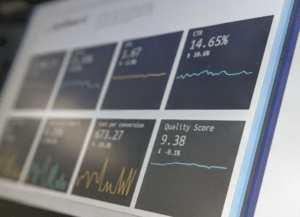Creating a Data-Driven Recruitment Process
Kevin Cullen | Hiring Advice, Industry News | June 2, 2020

Carly Fiorina, the former CEO of Hewlett-Packard, once wrote, “The goal is to turn data into information, and information into insight.”
Data mining and the utilization of big data have been deployed throughout every business function, including Human Resources. Using standard data-driven recruitment metrics has become an essential tool in developing a successful hiring plan. Measuring the hiring process, as well as tracking the employee life cycle, can uncover the most effective methods and allow human resources professionals to replicate the process.
However, HR departments need to be judicious in choosing the metrics that are right for their business. Simply applying all existing data-driven recruitment metrics poses the danger of bogging down the hiring process with unnecessary tasks that could negatively impact the business. The Society for Human Resources Management (SHRM) lists as many as 70 human resources metrics. While SHRM does categorize the datapoints into functional sections, tracking and reporting on each may prove overwhelming.
Forming a Data-Driven Recruitment Process
In its paper, “The 19 Recruiting Metrics You Should Know About” (AIHR Analytics), the Academy to Innovate HR lists what it considers the top analytical recruiting data points for tracking. Included in the list are KPIs such as:
- Time to Fill
- Time to Hire
- Sources of Hire
- First Year Attrition
- Hiring Manager Satisfaction
- Candidate Job Satisfaction
- Applicants Per Opening
- Cost Per Hire
- Offer Acceptance Rate
- Recruitment Funnel Effectiveness
Time to Fill measures the period between publishing an open job and filling it. It can be an essential measurement when projecting revenue, especially for a service-based organization. Underestimating the time it takes to fill a support position, for example, not only impacts growth plans but also puts additional stress on other service staff in the interim.
Time to Hire calculates the time elapsed between the initial point of contact with a potentially successful candidate and their eventual hire. While Time to Fill measures the length of the entire process in identifying the right candidate to the point of hire, Time to Hire indicates the speed at which an organization makes an offer once the right candidate is discovered. In effect, it is a direct reflection of the efficiency of the HR recruiting process.
Tracking the Sources of Hire has become a popular benchmark, especially since social media has become such an important channel for recruitment. The findings of this data-driven recruitment metric can help to inform further investment in outlets such as a company’s own website and with recruiting partners.
First Year Attrition also reflects the efficiency of the recruiting effort and can be divided into two categories: Managed and Unmanaged. Managed Attrition is when employment is terminated by the company and can indicate a lack of performance, poor candidate fit, or a combination of these and other factors. Unmanaged Attrition is when the employee leaves on their own and is most often due to a disconnect between the initial job description and the role itself. Either type of attrition can be costly, as it requires the process to begin all over again.
Having high scores for both Hiring Manager Satisfaction and Employee Satisfaction metrics can be defined as almost the direct counter of attrition, as a positive score in each can reflect excellent two-way communication between job expectations and performance. While it may appear, from a high level at least, that such measurements are highly qualitative, actual metrics can be derived through the establishment of objective questionnaires. Gradings based on questions such as the level of satisfaction with the candidates, screening procedures, and overall recruitment process provide feedback to recruitment teams and allows for modifications and streamlining.
Of all of these metrics, Cost per Hire may be the one with the most direct effect on the bottom line.
In calculating Cost Per Hire, not only do external costs such as advertising and agency fees need to be included, but internal ones should as well. Examples are the time spent by the HR and hiring teams in sourcing and identifying candidates. As in the case of the Time to Fill metric, the extended delay could result in higher costs of current staff.
Creating data tables for analysis and establishing benchmarks for these metrics can help organizations save time and decrease costs. The data-driven recruitment approach has proven to increase both revenue and profitability.
Let us help you streamline your recruiting efforts.
Over the past 20 years, Goodwin Recruiting has established a proven track record of helping organizations streamline their recruiting efforts and reduce the time gap between identifying and presenting quality candidates. Built on the foundation of open and transparent communication between candidate and client, Goodwin Recruiting has partnered with companies across the hospitality, senior living, manufacturing and engineering, and finance and accounting market segments.
We invite you to link arms with us so that we may assist you in locating the very best talent for your organization.
Share This Article






































